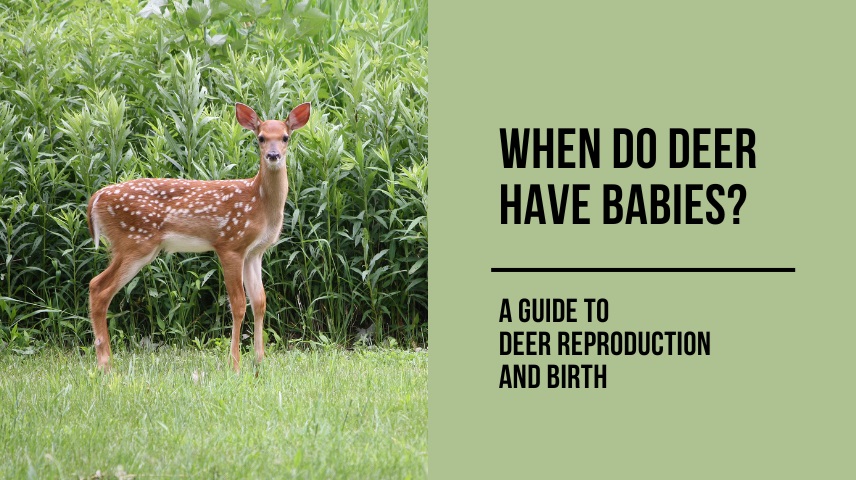Last Updated on February 22, 2025 by Mammals Life
A deer hide typically weighs between 8 to 15 pounds. Various factors like size, age, and thickness affect this weight.
Deer hides are popular for their durability and versatility. Hunters and craftsmen often use them for clothing, rugs, and other products. The weight of a deer hide can vary significantly based on several factors. The size and age of the deer play a crucial role.
Older and larger deer generally have heavier hides. The thickness of the hide also impacts its weight. Additionally, the method of processing and drying can alter the final weight. Understanding these factors helps in estimating the weight more accurately, which is essential for various applications and purposes.
Factors Influencing Deer Hide Weight
Understanding the weight of a deer hide can be quite fascinating. Various factors play a role in determining how much a deer hide weighs. These factors include the age and size of the deer and gender differences. Let’s explore these factors in more detail.
Age And Size Of Deer
The age and size of the deer significantly influence the hide’s weight. Younger deer tend to have lighter hides. Adult deer, especially mature bucks, have heavier hides. The overall body size also matters. A larger deer will have a larger and heavier hide. Below is a table that shows average hide weights based on age and size:
| Age | Size | Average Hide Weight (lbs) |
|---|---|---|
| Fawn | Small | 2-4 |
| Yearling | Medium | 5-8 |
| Adult | Large | 10-15 |
Gender Differences
Gender also plays a role in the weight of a deer hide. Male deer, or bucks, usually have heavier hides. This is due to their larger size and thicker skin. Female deer, or does, tend to have lighter hides. Bucks develop thicker hides to protect them during fights. Does not have this requirement.
- Bucks: Thicker and heavier hides
- Does: Thinner and lighter hides
Understanding these factors helps in estimating the weight of a deer hide. Whether age, size, or gender, each aspect contributes to the overall weight.
Seasonal Variations
Deer hides vary in weight throughout the year. The changes are mainly due to seasonal variations in their coats. Understanding these differences helps in estimating the weight of a deer hide accurately. Let’s explore the changes in detail.
Winter Coat
During winter, deer develop a thick coat to stay warm. This coat includes a dense underlayer and longer guard hairs. The increased fur density significantly affects the weight of the hide.
Winter coats can add extra pounds to the deer hide. This added weight provides insulation against the cold. The table below shows the average weight of deer hides in winter.
| Deer Type | Average Winter Hide Weight (lbs) |
|---|---|
| White-tailed Deer | 12-15 |
| Mule Deer | 15-20 |
| Elk | 25-30 |
Summer Coat
In summer, deer shed their winter coat. They develop a lighter, thinner coat. This coat helps them stay cool in the warmer months. The reduced fur density leads to a lighter hide.
Summer hides are much lighter than winter hides. The table below shows the average weight of deer hides in summer.
| Deer Type | Average Summer Hide Weight (lbs) |
|---|---|
| White-tailed Deer | 8-10 |
| Mule Deer | 10-12 |
| Elk | 15-20 |
Hide Preparation Techniques
Understanding the weight of a deer hide involves several factors. The way you prepare the hide is crucial. Different methods can affect the final weight. We will explore two main preparation techniques: fresh and tanned hides.
Fresh Hide Weight
Fresh hides are removed right after the hunt. They contain moisture and fat. This makes them heavier than tanned hides.
Typically, a fresh deer hide weighs between 10 to 15 pounds. The weight can vary based on the size of the deer.
Removing excess fat and flesh reduces the weight. It is important for better preservation.
Tanned Hide Weight
Tanned hides go through a drying process. This process removes moisture and fat. Therefore, tanned hides are lighter.
On average, a tanned deer hide weighs between 5 to 8 pounds. The weight reduction makes them easier to handle.
Proper tanning ensures durability and longevity. This is ideal for crafts and leather goods.
| Hide Type | Average Weight |
|---|---|
| Fresh Hide | 10 to 15 pounds |
| Tanned Hide | 5 to 8 pounds |
- Fresh hides are heavier due to moisture.
- Tanned hides are lighter and more durable.
- Remove the hide after the hunt.
- Clean excess fat and flesh.
- Dry the hide for tanning.
Impact Of Deer Species
The weight of a deer hide can vary greatly. A primary factor is the species of the deer. Different species have distinct physical characteristics. These characteristics influence the hide’s weight. Let’s explore two common species: Whitetail Deer and Mule Deer.
Whitetail Deer
Whitetail Deer are the most common deer in North America. They have a distinctive white tail and are smaller in size. The average weight of a Whitetail Deer’s hide ranges between 6 to 10 pounds.
- Size: Smaller body size affects hide weight.
- Habitat: Found in forests and fields.
- Diet: They eat leaves, twigs, and fruits.
Whitetail Deer have thinner hides. This makes them lighter. Their diet and habitat also play a role in their hide weight.
Mule Deer
Mule Deer are known for their large ears and sturdy build. They are typically found in the western regions of North America. The hide of a Mule Deer usually weighs between 8 to 14 pounds.
- Size: Larger body size increases hide weight.
- Habitat: Found in mountains and deserts.
- Diet: They eat shrubs, grasses, and herbs.
Mule Deer have thicker hides. This contributes to their heavier weight. Their rugged habitat also influences their hide’s characteristics.
| Deer Species | Average Hide Weight |
|---|---|
| Whitetail Deer | 6 to 10 pounds |
| Mule Deer | 8 to 14 pounds |
Geographical Differences
Understanding the weight of a deer hide involves considering various factors. One significant factor is the geographical differences where deer are found. These differences can influence the weight of the hide significantly.
Northern Vs. Southern Regions
Deer from northern regions tend to have heavier hides. This is because they need more insulation against the cold. Northern deer have thicker and denser fur. This adds to the overall weight of the hide.
In contrast, deer from southern regions have lighter hides. The climate is warmer, so they do not need as much insulation. Their fur is less dense and thinner, resulting in a lighter hide weight.
Habitat Influence
The habitat where a deer lives also affects the hide weight. Deer in forested areas often have heavier hides. Trees provide shade and cooler temperatures, requiring more insulation.
Deer living in open plains or deserts have lighter hides. These areas are hotter and require less insulation. The fur of these deer is usually thinner and less dense.
Below is a table summarizing the differences:
| Region | Hide Weight | Fur Characteristics |
|---|---|---|
| Northern | Heavier | Thick and Dense |
| Southern | Lighter | Thin and Less Dense |
| Forested Areas | Heavier | Thick and Dense |
| Open Plains/Deserts | Lighter | Thin and Less Dense |
In summary, both the region and habitat of a deer can greatly impact the weight of its hide. Understanding these factors helps in estimating the weight accurately.
Practical Applications
Understanding the weight of a deer hide can be quite useful. This knowledge has practical applications in various fields. Two major areas where deer hide weight is essential are leather production and crafts and accessories. Let’s explore these applications in detail.
Leather Production
Deer hides are often used in leather production. The weight of the hide can affect the quality and type of leather produced. Light hides are used for soft, flexible leather. Heavier hides are used for more durable leather items.
| Hide Weight | Leather Type |
|---|---|
| Light (2-4 lbs) | Soft leather for clothing |
| Medium (4-6 lbs) | Flexible leather for bags |
| Heavy (6-10 lbs) | Durable leather for shoes |
Crafts And Accessories
Deer hides are also popular in crafts and accessories. The weight of the hide can influence the type of craft or accessory. Lighter hides are easier to work with. Heavy hides are more robust and long-lasting.
- Jewelry: Light hides are perfect for earrings and bracelets.
- Bags: Medium-weight hides are ideal for handbags and satchels.
- Belts: Heavy hides make strong, durable belts.
In crafts, the weight of the hide can define the end product’s quality. Always choose the right weight for your specific project.
Frequently Asked Questions
How Heavy Is A Deer Hide?
A deer hide typically weighs between 8 to 15 pounds. The weight varies based on the deer’s size.
How Much Weight Is Lost When Field Dressing A Deer?
Field dressing a deer typically results in a weight loss of about 30-40%. This includes internal organs and other inedible parts.
How Much Meat Will A 100 Lb Deer Yield?
A 100 lb deer typically yields about 40-50 lbs of meat. Factors like age and processing methods can affect this.
How Much Does A Deer Weigh In Pounds?
A deer typically weighs between 100 to 300 pounds. Adult male deer, or bucks, usually weigh more than females.
How Much Does A Deer Hide Weigh?
A deer hide typically weighs between 8 to 15 pounds.
What Factors Affect Deer Hide Weight?
Age, species, and the deer’s diet significantly influence hide weight.
Conclusion
A deer’s hide weight involves considering several factors. These include the deer’s age, species, and season. Accurate weight estimation aids hunters and leatherworkers alike. Knowing these details enhances your knowledge and expertise. Always consider these factors for better results.











